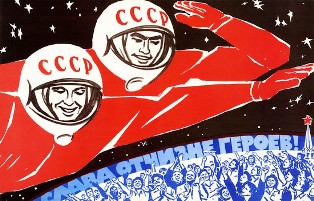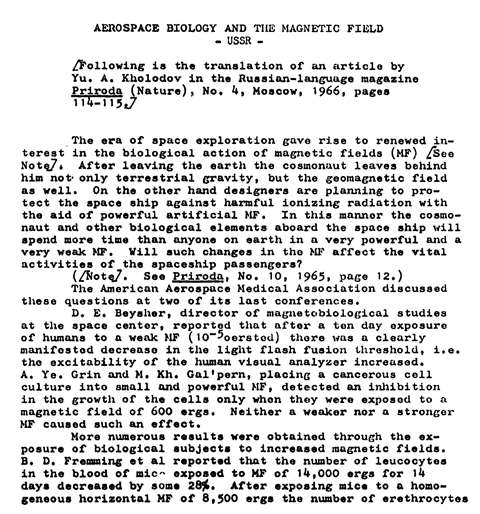Space Race Research by the Soviet Union: English-Language Translations from JPRS Reports

For most of the second half of the twentieth century, the United States and the Soviet Union were engaged in serious competition on many fronts. Perhaps the most popular and comprehensible manifestation of this competition was the space race. It is not surprising that a significant effort was made by the Joint Publications Research Service (JPRS) to gather and translate a wide spectrum of scientific and technical articles published by the Soviets. From the July release of JPRS Reports, we highlight advances in space science and space travel research.
The Space Age: Exploration of the Moon
This report was published less than three years before the United States landed men on the moon and Neil Armstrong took “one small step for [a] man, one giant leap for mankind.” The author states,
The first five years in space (1957-1962) passed under the sigh of triumphal attainments of the USSR in all fields of space research, including lunar exploration.
He defines the American space program largely by its failures, while extolling the steady stream of Soviet accomplishments. However, he does credit American research, particularly photographing the moon's surface but asserts that the photography could not answer critical questions that only a successful soft landing on the moon's surface could satisfy.

Problems in Aerospace Medicine
This translation of a book compiling scores of research papers is a comprehensive account of vegetable, animal, and human experimentation on the physiological effects of space travel. Soviet scientists explored the effects of weightlessness, acceleration, cosmic radiation, and gravitational collapse, to name only a few topics, on everything from cardiovascular systems to pancreatic secretions to brain activity to the surface of the skin. These reports provide a comprehensive survey of the work that had been done by 1966 in the Soviet Union to evaluate the risks to cosmonauts in both the short and long terms. The Table of Contents alone is a striking reminder of how much we had to learn almost 50 years ago and, perhaps, how much we take for granted now about manned space flight.

Aerospace Biology and the Magnetic Field
The author asks the question:
After leaving the earth the cosmonaut leaves behind him not only terrestrial gravity, but the geomagnetic field as well. On the other hand, designers are planning to protect the space ship against harmful ionizing radiation with the aid of powerful artificial MF [magnetic fields]. In this manner, the cosmonaut and other biological elements aboard the spaceship will spend more time than anyone on earth in a very powerful and a very weak MF. Will such changes in the MF affect the vital activities of the spaceship passengers?
He briefly reviews the results of contemporary experimentation on animals and plants which appear to be affected differently. He asserts that more research is needed but posits that “It is possible that a different magnetic field will be created in the various compartments of a spaceship.”

For more information about Joint Publications Research Service (JPRS) Reports, 1957-1994, or to request a trial for your institution, please contact readexmarketing@readex.com.



